Growth and sexual dimorphism
A striking aspect of elephant seal biology is the dimorphism between the sexes. Male elephant seals are much bigger than females, and the difference is huge in particular in the southern species. The two species of elephant seals are the most dimorphic species of all pinnipeds.
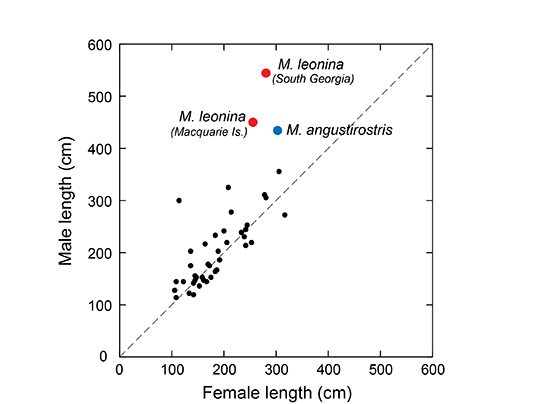
Pinniped size dimorphism, southern elephant seal in red, northern in blue. Please nore the difference in dimorphism between the South Georgia and Macquarie Island populations of elephant seals.
Moreover, males show a change in the shape of both the whole body and the skull. Males also have secondary sexual traits that are not observed in females, like the expanded nostrils that form a real proboscis, the enlarged canine teeth, and the tick and hardened skin shield on the neck and chest. All those differences are supposed to be the result of sexual selection acting on the male phenotype to produce individuals that are good at fighting, getting access to females, mating, and, therefore, generating pups.For more details about the skull growth and dimorphism please see the skull section of the website.
The dimorphism in body size and shape between the sexes is the result of a different pattern of growth. At birth, males are usually a bit longer than females, but there is a large overlap between the sexes.
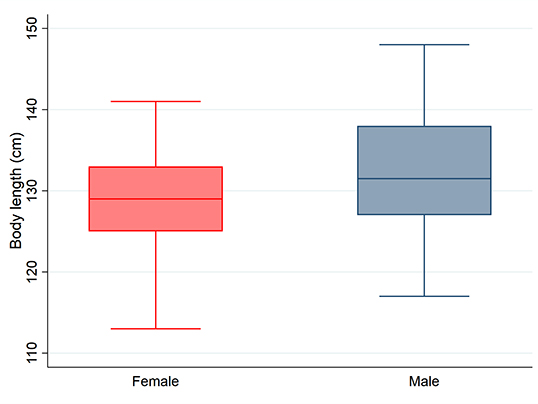
Boxplots of body length at birth; although males are slightly larger there is a large overlap in the size disribution of the two sexes
At wening, the two sexes are even more similar. Although males are slighty heavier, there is a huge variation within each sex, and, therefore, the most evident pattern at weaning is the individual variation.
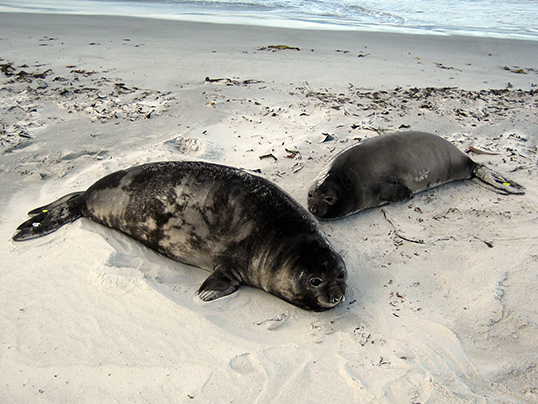
Two recently weaned female pups at Sea Lion Island, showing the very large intra-sex variation in body size and weight
The two sexes are still very similar during the two years of life, but starting to age three males grow faster. Moreover, around puberty (five year of age) the growth rate shows a huge acceleration, what is called a "growth spurt". During this period of accelerated growth males increase in size compared to females, and their body shape start to change to be well adapted to the intense competition and fighting of the breeding age.
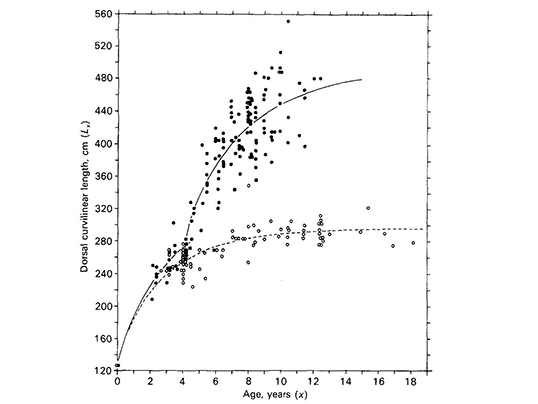
Male (dots) and female (circles) growth curves; data from the Macquarie Island population, redrawn from McLaren (1993)
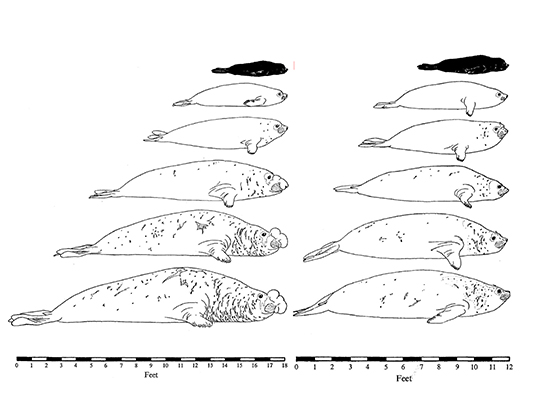
Change in body shape during growth in males and females, redrawn from Laws, R. M. (1953). The elephant seal (Mirounga leonina Linn.). I. Growth and age. Scientific Reports of the Falkland Islands Dependencies Survey 8: 1-62.
The final result of the very different growth pattern shown by the two sexes is the huge sexual size dimorphism of the adults.
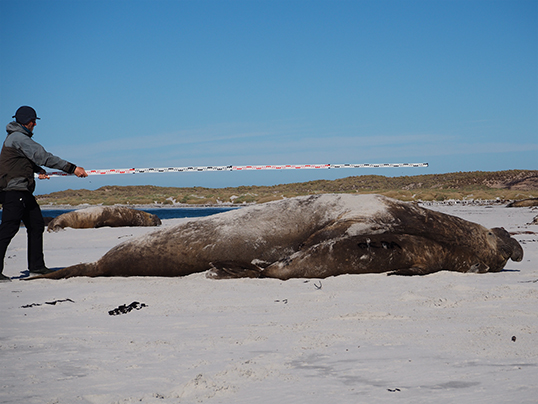
Male and female side by side during a photogrammetric measurement session (the survey pole is 4 m long).
